 W
WThe Battle of Agincourt was an English victory in the Hundred Years' War. It took place on 25 October 1415 near Azincourt, in Northern France. The unexpected English victory against the numerically superior French army boosted English morale and prestige, crippled France and started a new period of English dominance in the war.
 W
WThe Siege of Amiens was a siege and battle fought during the Franco-Spanish War (1595-1598) and the Anglo-Spanish War (1585–1604) between 13 May and 25 September 1597. The Spanish, who had sent a large army in March, had captured the city of Amiens easily in a ruse. Henry IV of France, after the surprise of the capture, immediately and quickly built up an army which included a large English force and besieged Amiens on 13 May.
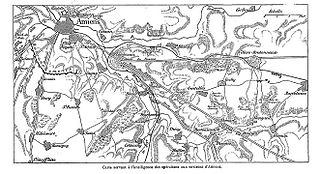 W
WThe Battle of Amiens, also known as the Battle of Villers-Bretonneux, was fought on 27 November 1870 between French and Prussian forces during the Franco-Prussian War (1870–1871). It ended in a Prussian victory, forcing the French to retreat and allowing the Prussians to capture Amiens, France.
 W
WThe Battle of Avesnes-le-Sec was a military action during the Flanders Campaign of the French Revolutionary Wars, between French forces under General Nicolas Declaye, and Imperial Austrian forces under Prince of Hohenlohe-Kirchberg. The Austrian cavalrymen made an overwhelming charge against the French and severely defeated them.
 W
WThe Battle of the Axona was fought in 57 BC, between the Roman army of Gaius Julius Caesar and the Belgae. The Belgae, led by King Galba of the Suessiones, attacked, only to be repelled by Caesar. Fearing an ambush, the Romans delayed their pursuit. Caesar's Commentarii de Bello Gallico describes this battle at 2.7 - 2.11.
 W
WThe Battle of Bapaume was a battle during the Franco-Prussian War, brought about by French attempts to relieve the besieged city of Péronne, Somme. The battle was fought on 3 January 1871 near the town of Bapaume.
 W
WThe Battle of Denain was fought on 24 July 1712 as part of the War of the Spanish Succession. It resulted in a French victory, under Marshal Villars, against Dutch and Austrian forces, under Prince Eugene of Savoy.
 W
WThe Battle of Soissons was fought in 486 between Frankish forces under Clovis I and the Gallo-Roman domain of Soissons under Syagrius. The battle was a victory for the Franks, and led to the conquest of the Roman rump state of Soissons, a milestone for the Franks in their attempt to establish themselves as a major regional power.
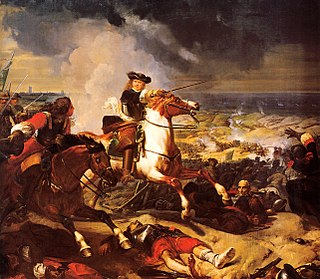 W
WThe Battle of the Dunes, also known as the Battle of Dunkirk, was a major battle fought on 14 June 1658. It was a victory of the French army and their Commonwealth of England allies, under Turenne, one of the great generals of his age, over the Spanish army and their English Royalist and French Fronde rebels, led by John of Austria the Younger and Louis II de Condé. The battle was part of the Franco-Spanish War and the concurrent Anglo-Spanish War, and was fought near Dunkirk a fortified port city on the coast of the English Channel in what was then the Southern Netherlands that belonged to Habsburg Spain. The French army had laid siege to Dunkirk and the Spanish army was attempting to raise the siege.
 W
WThe Battle of Vicus Helena was a clash between Salian Franks led by Chlodio and Roman soldiers commanded by general Flavius Aetius; the latter were victorious. It is attested in a limited number of late Roman and early Medieval sources, and reportedly occurred in or around the year 448 in the unidentified place of Vicus Helena somewhere in the Civitas Atrebatium, modern Artois.
 W
WThe Battle of Blanchetaque was fought on 24 August 1346 between an English army under King Edward III and a French force commanded by Godemar du Fay. The battle was part of the Crécy campaign, which took place during the early stages of the Hundred Years' War. After landing in the Cotentin Peninsula on 12 July, the English army had burnt a path of destruction through some of the richest lands in France to within 20 miles (32 km) of Paris, sacking a number of towns on the way. The English then marched north, hoping to link up with an allied Flemish army which had invaded from Flanders. They were outmanoeuvred by the French king, Philip VI, who garrisoned all of the bridges and fords over the River Somme and followed the English with his own field army. The area had previously been stripped of food stocks by the French, and the English were essentially trapped.
 W
WThe Siege of Bouchain, was a siege of the War of the Spanish Succession, and a victory for the French troops of the Duc de Villars. A French army of 20,000 men besieged and captured the Allied-controlled fortifications after an 18-day siege, with the 2,000-strong Dutch-Imperial garrison under Major-General Grovenstein capitulating on 19 October.
 W
WThe Siege of Calais occurred at the conclusion of the Crécy campaign, when an English army under the command of King Edward III of England successfully besieged the French town of Calais during the Edwardian phase of the Hundred Years' War.
 W
WThe Battle of Calais took place in 1350 when an English force defeated an unsuspecting French army which was attempting to take the city. Despite a truce being in effect the French commander Geoffrey de Charny had planned to take the city by subterfuge, and bribed Amerigo of Pavia, an Italian officer of the city garrison, to open a gate for them. The English king, Edward III, became aware of the plot and personally led his household knights and the Calais garrison in a surprise counter-attack. The French were routed by this smaller force, with significant losses and all their leaders captured or killed.
 W
WThe Siege of Calais between June and July 1436 was a failed siege of English-held Calais by Philip the Good, Duke of Burgundy, and Flemish militia.
 W
WOn 23 August 1328, the Battle of Cassel took place near the city of Cassel, 30 km south of Dunkirk in present-day France. Philip VI, fought Nicolaas Zannekin, a wealthy farmer from Lampernisse. Zannekin was the leader of a band of Flemish independence rebels. The fighting erupted over taxation and punitive edicts of the French over the Flemish. The battle was won decisively by the French. Zannekin and about 3,200 Flemish rebels were killed in the battle.
 W
WThe Battle of Cassel, sometimes called the Battle of Peene, took place during the Franco-Dutch War, near Cassel, 15 km (9 mi) west of Saint-Omer. A French army commanded by the duc de Luxembourg defeated a combined Dutch–Spanish force under William of Orange.
 W
WThe Battle of Château-Thierry saw the Imperial French army commanded by Emperor Napoleon attempt to destroy a Prussian corps led by Ludwig Yorck von Wartenburg and an Imperial Russian corps under Fabian Wilhelm von Osten-Sacken. The two Allied corps managed to escape across the Marne River, but suffered considerably heavier losses than the pursuing French. This action occurred during the Six Days' Campaign, a series of victories that Napoleon won over Prussian Field Marshal Gebhard Leberecht von Blücher's Army of Silesia. Château-Thierry lies about 75 kilometres (47 mi) northeast of Paris.
 W
WThe Siege of Compiègne (1430) was Joan of Arc's final military action. Her career as a leader ended with her capture by the Burgundians during a skirmish outside the town on 23 May 1430. Although this was otherwise a minor siege, both politically and militarily, the loss of France's most charismatic commander was an important event of the Hundred Years' War.
 W
WThe Siege of Condé saw a force made up of Habsburg Austrians and French Royalists commanded by Duke Ferdinand Frederick Augustus of Württemberg lay siege to a Republican French garrison led by Jean Nestor de Chancel. After a blockade lasting about three months the French surrendered the fortress. The operation took place during the War of the First Coalition, part of a larger conflict known as the French Revolutionary Wars. Condé-sur-l'Escaut, France is located near the Belgium border about 14 kilometres (9 mi) northeast of Valenciennes.
 W
WThe Battle of Crécy took place on 26 August 1346 in northern France between a French army commanded by King Philip VI and an English army led by King Edward III. The French attacked the English while they were traversing northern France during the Hundred Years' War resulting in an English victory and heavy loss of life among the French.
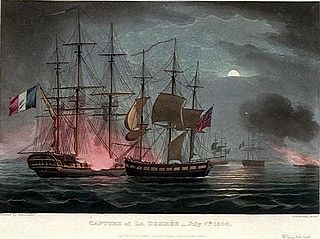 W
WThe Raid on Dunkirk of 7 July 1800 was an attack by a British Royal Navy force on the well-defended French anchorage of Dunkirk in the English Channel during the French Revolutionary Wars. French naval forces had been blockaded in their harbours during the conflict, and often the only method of attacking them was through fireships or "cutting-out" expeditions, in which boats would carry boarding parties into the harbour at night, seize ships at anchor and bring them out. The attack on Dunkirk was a combination of both of these types of operation, aimed at a powerful French frigate squadron at anchor in Dunkirk harbour. The assault made use of a variety of experimental weaponry, some of which was tested in combat for the first time with mixed success.
 W
WThe Siege of Dunkirk in World War II began in September 1944, when Allied units of the Second Canadian Division surrounded the fortified city and port of Dunkirk. The siege lasted until after the official end of the war in Europe. German units within the fortress withstood probing attacks and as the opening of the port of Antwerp was more important, the 21st Army Group commander, Field Marshal Bernard Montgomery, decided to contain but not capture Dunkirk with the 1st Czechoslovak Armoured Brigade. The fortress, commanded by Admiral Friedrich Frisius, eventually surrendered unconditionally to Brigadier General Alois Liška, the commander of the Czechoslovak brigade group, on 9 May 1945, a day after the surrender of Nazi Germany took effect.
 W
WThe Dunkirk evacuation, code-named Operation Dynamo and also known as the Miracle of Dunkirk, was the evacuation of Allied soldiers during World War II from the beaches and harbour of Dunkirk, in the north of France, between 26 May and 4 June 1940. The operation commenced after large numbers of Belgian, British, and French troops were cut off and surrounded by German troops during the six-week Battle of France. In a speech to the House of Commons, British Prime Minister Winston Churchill called this "a colossal military disaster", saying "the whole root and core and brain of the British Army" had been stranded at Dunkirk and seemed about to perish or be captured. In his "we shall fight on the beaches" speech on 4 June, he hailed their rescue as a "miracle of deliverance".
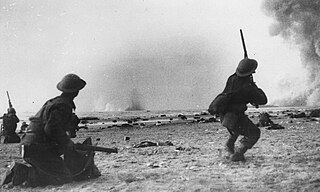 W
WThe Battle of Dunkirk was fought in Dunkirk (Dunkerque), France, during the Second World War, between the Allies and Nazi Germany. As the Allies were losing the Battle of France on the Western Front, the Battle of Dunkirk was the defence and evacuation to Britain of British and other Allied forces in Europe from 26 May to 4 June 1940.
 W
WThe Battle of Famars was fought on 23 May 1793 during the Flanders Campaign of the War of the First Coalition. An Allied Austrian, Hanoverian, and British army under Prince Josias of Saxe-Coburg-Saalfeld defeated the French Army of the North led by François Joseph Drouot de Lamarche. The action occurred near the village of Famars in northern France, five km south of Valenciennes.
 W
WThe Battle of Gerberoy was fought in 1435 between French and English forces. The French were led by La Hire and Jean Poton de Xaintrailles, who were victorious. The English losses were heavy, which later included their commander, John FitzAlan, 14th Earl of Arundel.
 W
WThe First Battle of Guinegate took place on August 7, 1479. French troops of King Louis XI were defeated by the Burgundians led by Archduke Maximilian of Habsburg. This battle was the first in which the innovative Swiss pike square formation was first employed by a power that was not natively Swiss.
 W
WThe Battle of Hallue was a battle of the Franco-Prussian War on December 23 and 24, 1870.
 W
WThe Battle of Hondschoote took place during the Flanders Campaign of the Campaign of 1793 in the French Revolutionary Wars. It was fought during operations surrounding the Siege of Dunkirk between 6 and 8 September 1793 at Hondschoote, Nord, France, and resulted in a French victory under General Jean Nicolas Houchard and General Jean-Baptiste Jourdan against the command of Marshal Freytag, part of the Anglo-Hanoverian corps of the Duke of York.
 W
WThe Siege of Le Quesnoy saw a force made up of Habsburg Austrians and French Royalists led by François Sébastien Charles Joseph de Croix, Count of Clerfayt lay siege to a Republican French garrison commanded by François Goullus. After two and a half week siege, the French capitulated after suffering heavy losses. The War of the First Coalition operation was fought at Le Quesnoy, located near the border with Belgium about 27 kilometres (17 mi) west of Maubeuge.
 W
WThe Siege of Lille was the salient operation of the 1708 campaign season during the War of the Spanish Succession. After an obstinate defence of 120 days, the French garrison surrendered the city and citadel of Lille, commanded by Marshal Boufflers, to the forces of the Duke of Marlborough and Prince Eugene.
 W
WThe Siege of Lille saw a Republican French garrison under Jean-Baptiste André Ruault de La Bonnerie hold Lille against an assault by a Habsburg army commanded by Duke Albert of Saxe-Teschen. Though the city was fiercely bombarded, the French successfully withstood the Austrian attack in the action. Because the Austrians were unable to completely encircle the city, the French were able to continuously send in reinforcements. After news of the French victory over the Prussians at Valmy, Albert withdrew his troops and siege cannons. The next battle was at Jemappes in November. The Column of the Goddess monument was completed in 1845 to commemorate the siege.
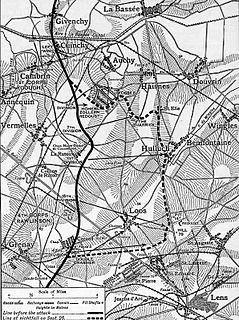 W
WThe Battle of Loos took place from 25 September – 8 October 1915 in France on the Western Front, during the First World War. It was the biggest British attack of 1915, the first time that the British used poison gas and the first mass engagement of New Army units. The French and British tried to break through the German defences in Artois and Champagne and restore a war of movement. Despite improved methods, more ammunition and better equipment, the Franco-British attacks were largely contained by the Germans, except for local losses of ground. The British gas attack failed to neutralize the defenders and the artillery bombardment was too short to destroy the barbed wire or machine gun nests. German tactical defensive proficiency was still dramatically superior to the British offensive planning and doctrine, resulting in a British defeat.
 W
WThe Battle of Malplaquet was fought near the border of France on 11 September 1709 and was a major engagement of the War of the Spanish Succession. It pitted a French army, commanded by Marshal Duke of Villars and Marshal Duke of Boufflers, against an allied army, led by the Duke of Marlborough and Prince Eugene of Savoy. After a string of defeats, failure of the harvest and the prospect of invasion, Louis XIV of France had appealed to French patriotism, recruited fresh soldiers and instructed Villars to use the country's last army to give battle against Marlborough's formidable force. After a series of manoeuvres, Villars settled on a position in which both of his flanks were anchored in woods. Even though the French were outnumbered, Marlborough's familiar tactics of flank attacks to draw off troops from the centre incurred serious attrition by massed French musketry and skillful use of artillery.
 W
WThe Second Battle of the Marne was the last major German offensive on the Western Front during the First World War. The attack failed when an Allied counterattack, supported by several hundred tanks, overwhelmed the Germans on their right flank, inflicting severe casualties. The German defeat marked the start of the relentless Allied advance which culminated in the Armistice with Germany about 100 days later.
 W
WOperation Michael was a major German military offensive during the First World War that began the Spring Offensive on 21 March 1918. It was launched from the Hindenburg Line, in the vicinity of Saint-Quentin, France. Its goal was to break through the Allied (Entente) lines and advance in a north-westerly direction to seize the Channel Ports, which supplied the British Expeditionary Force (BEF) and to drive the BEF into the sea. Two days later General Erich Ludendorff, the chief of the German General Staff, adjusted his plan and pushed for an offensive due west, along the whole of the British front north of the River Somme. This was designed to first separate the French and British Armies before continuing with the original concept of pushing the BEF into the sea. The offensive ended at Villers-Bretonneux, to the east of the Allied communications centre at Amiens, where the Allies managed to halt the German advance; the German Army had suffered many casualties and was unable to maintain supplies to the advancing troops.
 W
WThe Battle of Mont Saint-Quentin was a battle on the Western Front during World War I. As part of the Allied Hundred Days Offensive on the Western Front in the late summer of 1918, the Australian Corps crossed the Somme River on the night of August 31, and broke the German lines at Mont Saint-Quentin and Péronne. The British Fourth Army's commander, General Henry Rawlinson, described the Australian advances of August 31 – September 4 as the greatest military achievement of the war. During the battle Australian troops stormed, seized and held the key height of Mont Saint-Quentin, a pivotal German defensive position on the line of the Somme.
 W
WThe Battle of Pozières took place in France around the village of Pozières, during the Battle of the Somme. The costly fighting ended with the British in possession of the plateau north and east of the village, in a position to menace the German bastion of Thiepval from the rear. The Australian official historian Charles Bean wrote that Pozières ridge "is more densely sown with Australian sacrifice than any other place on earth."
 W
WThe Battle of the Sabis, also known as the Battle of the Sambre or the Battle against the Nervians, was fought in 57 BC near modern Saulzoir in Northern France, between Caesar's legions and an association of Belgae tribes, principally the Nervii. Julius Caesar, commanding the Roman forces, was surprised and nearly defeated. According to Caesar's report, a combination of determined defence, skilled generalship, and the timely arrival of reinforcements allowed the Romans to turn a strategic defeat into a tactical victory. Few primary sources describe the battle in detail, with most information coming from Caesar's own report on the battle from his book, Commentarii de Bello Gallico. Little is therefore known about the Nervii perspective on the battle.
 W
WThe Battle of St. Quentin Canal was a pivotal battle of World War I that began on 29 September 1918 and involved British, Australian and American forces operating as part of the British Fourth Army under the overall command of General Sir Henry Rawlinson. Further north, part of the British Third Army also supported the attack. South of the Fourth Army's 19 km (12 mi) front, the French First Army launched a coordinated attack on a 9.5 km (6 mi) front. The objective was to break through one of the most heavily defended stretches of the German Siegfriedstellung, which in this sector utilised the St Quentin Canal as part of its defences. The assault achieved its objectives, resulting in the first full breach of the Hindenburg Line, in the face of heavy German resistance. In concert with other attacks of the Grand Offensive along the length of the line, Allied success convinced the German high command that there was little hope of an ultimate German victory.
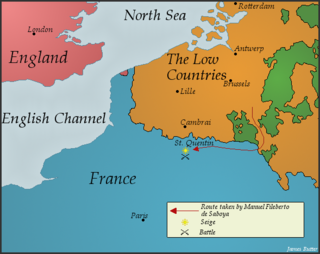 W
WThe Battle of Saint-Quentin of 1557, was a decisive engagement, during the Italian War of 1551–1559, between the Kingdom of France and the Habsburg empire at Saint-Quentin in Picardy. A Habsburg Spanish force under Duke Emmanuel Philibert of Savoy defeated a French army under the command of Duke Louis Gonzaga and Duke Anne de Montmorency.
 W
WThe Battle of Saint-Omer, fought on 26 July 1340, was a major engagement which occurred in the early stages of the Hundred Years' War. It was a part of King Edward III's summer campaign against France launched from Flanders. The campaign was initiated in the aftermath of the Battle of Sluys but turned out to be far less successful than he hoped. At Saint-Omer, in an unexpected turn of events, the heavily outnumbered French men-at-arms, tasked with defending the city and awaiting for reinforcements, defeated the Anglo-Flemish forces on their own. The Allies suffered heavy losses and the French captured their camp intact, taking many warhorses and carts, all the tents, huge quantities of stores and most of the Flemish standards. Edward's campaign of 1340 had begun badly. On the bright side, the loss of several thousand men was bearable, as the survivors, which included most of the precious English longbowmen, eventually rejoined him at Tournai. The defeat had serious strategic consequences. It exposed southern Flanders to the wrath of Philip VI and enabled the French to concentrate their forces against the main army of the coalition in the Tournaisis.
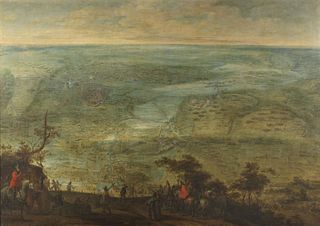 W
WThe Siege of Saint-Omer was a siege in the Thirty Years' War in which a French army under Gaspard III de Coligny, Maréchal de Châtillon, laid siege to the Flemish city of Saint-Omer, defended by a small garrison in command of Lancelot II Schetz, count of Grobbendonck. Despite several initial successes in the capture of the minor forts around Saint-Omer, on the night of 8/9 June a Spanish relief army under Thomas Francis, Prince of Carignano surprised Châtillon's troops and established a small fort in the middle of the French lines. An entire army corps under Maréchal de La Force was ordered to move towards Saint-Omer to support Châtillon siege, but on July 12 a further Imperial-Spanish force commanded by Ottavio Piccolomini entered Saint-Omer, resolving the French marshals to withdraw.
 W
WThe Battle of Saucourt occurred between Danish forces of pagan Viking warriors and the Christian troops of joint Kings of West Francia Louis III of France and his brother Carloman II on 3 August 881 at Saucourt-en-Vimeu.
 W
WThe Siege of Dunkirk in 1658 was a military operation by the allied forces of France and Commonwealth England intended to take the fortified port city of Dunkirk, Spain's greatest privateer base, from the Spanish and their confederates: the English royalists and French Fronduers. Dunkirk was a strategic port on the southern coast of the English Channel in the Spanish Netherlands that had often been a point of contention previously and had changed hands a number of times. Privateers operating out of Dunkirk and other ports had cost England some 1,500 to 2,000 merchant ships in the past year. The French and their English Commonwealth allies were commanded by Marshal of France Turenne. The siege would last a month and featured numerous sorties by the garrison and a determined relief attempt by the Spanish army under the command of Don Juan of Austria and his confederate English royalists under Duke of York and rebels of the French Fronde under the Great Condé that resulted in the battle of the Dunes.
 W
WThe Siege of Lille took place during the War of Devolution. Louis XIV's forces besieged Lille from 10 August to 26 September 1667. It was the only major engagement of the war. Lille was the first major victory for Vauban’s siege techniques. Louis XIV, arguing that the Spanish dowry of his wife Maria Theresa of Spain had not been paid, began to expand French borders to the north and east, invading the Spanish Netherlands. This began a conflict with Spain that became the War of Devolution. After taking Charleroi, Tournai and Douai, French troops laid siege to Lille, at that time part of the county of Flanders under Spanish rule. Siege techniques applied by the French military engineer Vauban were instrumental in their capture.
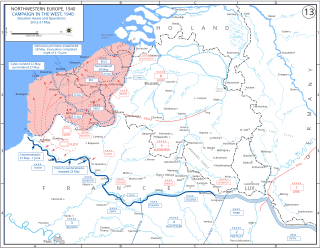 W
WThe Siege of Lille, or Lille Pocket, took place during the Battle of France in the Second World War. The siege around the city of Lille took place between the French IV Corps and V Corps of the First Army and four German infantry divisions supported by three panzer divisions.
 W
WThe Siege of Maubeuge took place from 24 August – 7 September 1914, at le camp retranché de Maubeuge the start of World War I on the Western Front. The Entrenched Camp blocked the railway from Thionville to Luxembourg, which had also been cut by the demolition of the rail bridge over the Meuse at Namur in Belgium to the north. Until Maubeuge fell, the German armies in the north could use only the single-track line from Trier to Liège, Brussels, Valenciennes and Cambrai, which could accommodate a maximum of forty trains a day.
 W
WThe Battle of the Somme, also known as the Somme Offensive, was a battle of the First World War fought by the armies of the British Empire and French Third Republic against the German Empire. It took place between 1 July and 18 November 1916 on both sides of the upper reaches of the River Somme in France. The battle was intended to hasten a victory for the Allies. More than three million men fought in the battle and one million men were wounded or killed, making it one of the deadliest battles in human history.
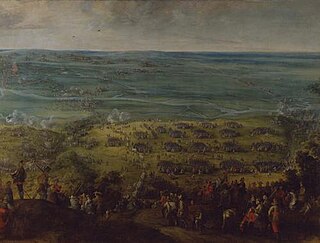 W
WThe Crossing of the Somme took place on 5 August 1636 during the Thirty Years' War and the Franco-Spanish War when units of the Spanish Army of Flanders, the Imperial Army and the Duchy of Lorraine under Thomas Francis, Prince of Carignano, lieutenant of the Cardinal-Infante Ferdinand of Austria, crossed the Somme river near Bray-sur-Somme during its offensive in French territory. Despite the fierce resistance of the French army led by Louis de Bourbon, Count of Soissons, the allied troops successfully crossed the river and drove off the French troops along the Oise river, proceeding over the following weeks to invest the important fortress of Corbie, located two leagues upriver of Amiens, which caused a spread of panic among the population of Paris.
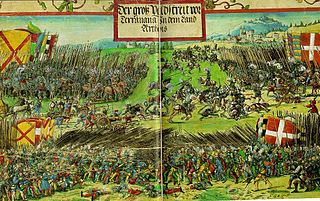 W
WThe Battle of the Spurs or (Second) Battle of Guinegate took place on 16 August 1513. It formed a part of the War of the League of Cambrai, during the ongoing Italian Wars. Henry VIII and Maximilian I were besieging the town of Thérouanne in Artois. Henry's camp was at Guinegate, now called Enguinegatte. A large body of French heavy cavalry under Jacques de La Palice was covering an attempt by light cavalry to bring supplies to the besieged garrison. English and Imperial troops surprised and routed this force. The battle was characterised by the precipitate flight and extensive pursuit of the French. During the pursuit a number of notable French leaders and knights were captured. After the fall of Thérouanne, Henry VIII besieged and took Tournai.
 W
WThe Battle of St. Quentin was a battle of the Franco-Prussian War in which Prussian forces defeated French attempts to relieve the besieged city of Paris.
 W
WThe Battle of St. Quentin (also called the First Battle of Guise was fought from 29 to 30 August 1914, during the First World War.
 W
WThe Battle of Tourcoing saw a Republican French army directed by General Joseph Souham defend against an attack by an Habsburg, British, and Hanoverian Coalition army under Austrian Prince Josias of Saxe-Coburg-Saalfeld and Prince Frederick, Duke of York and Albany. The French army was temporarily led by Souham in the absence of its normal commander Jean-Charles Pichegru. Threatened with encirclement, Souham and division commanders Jean Victor Marie Moreau and Jacques Philippe Bonnaud improvised a counterattack which defeated the Coalition's widely separated and badly coordinated columns. The War of the First Coalition action was fought near the town of Tourcoing, just north of Lille in northeastern France.
 W
WThe Siege of Valenciennes took place from 28 February to 17 March 1677, during the Franco-Dutch War, when Valenciennes, then in the Spanish Netherlands, was attacked by a French army under the duc de Luxembourg.
 W
WThe Siege of Valenciennes took place between 13 June and 28 July 1793, during the Flanders Campaign of the War of the First Coalition. The French garrison under Jean Henri Becays Ferrand was blockaded by part of the army of Prince Josias of Saxe-Coburg-Saalfeld, commanded by the Prince Frederick, Duke of York and Albany. Valenciennes fell on 28 July, resulting in an Allied victory.
 W
WThe Battle of Wattignies saw a Republican French army commanded by Jean-Baptiste Jourdan attack a Coalition army directed by Prince Josias of Saxe-Coburg-Saalfeld. After two days of combat Jourdan's troops compelled the Habsburg covering force led by François Sébastien Charles Joseph de Croix, Count of Clerfayt to withdraw. The War of the First Coalition victory allowed the French to raise the Siege of Maubeuge. At a time when failed generals were often executed or imprisoned, Jourdan had to endure interference from Lazare Carnot from the Committee of Public Safety. The village, renamed Wattignies-la-Victoire in honor of the important success, is located 9 kilometres (6 mi) southeast of Maubeuge.